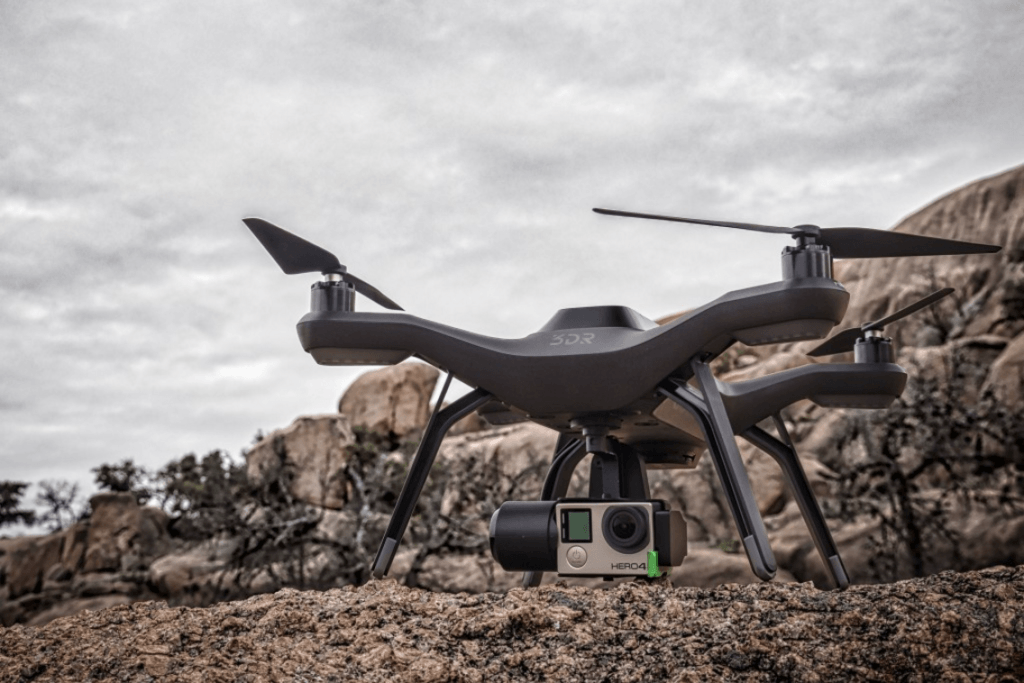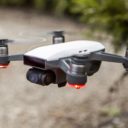3DR Solo Drone Review
When 3DR set out to design the Solo, there is no question who they were gunning after. With the revolutionary Phantom line, DJI set the bar for consumer drones far higher than anyone saw coming, and that is why the Phantom is dominating the marketplace. In order to compete with the Phantom, 3DR would need to build just as user friendly of a product as DJI and then some…
3D Robotics Solo Drone Review
DJI’s missed opportunity
Although DJI created a consumer product with a user experience rich enough to earn a spot on Apple’s shelves, they missed a crucial insight that they are now just realizing — new pilots don’t have the flying experience necessary to get the footage they really want! With enough flight time, pilots slowly gain the ability to pull off flight maneuvers that makes for eye-pleasing footage, but this takes time — much more than many people want to spend.
The 3D Robotics solution: Autopilot Powers
3DR has a long history of developing intelligent autopilot systems that provide pilots with trusty co-pilots to handle many different aspects of flying. It just so happened that by the time that DJI’s Phantom had laid a hardware roadmap for manufacturing user-friendly quadcopters, 3DR had developed the perfect ingredients for a corresponding user-friendly autopilot system.
The timing couldn’t have been any better, so 3DR went about designing a new quadcopter that integrates the hardware mastery of DJI with its own in-depth autopilot experience. The aim: alleviate the beginner pilot’s learning curve and give advanced pilots new tools for possibilities that that would be impossible as a one man show.
How is Solo different?
The biggest and most powerful difference maker for Solo is Smart Smarts — the culmination and packaging of 3DR’s autopilot development. Smart Shots puts you in the director’s chair: plan the shot in your mind, then let Solo automatically handle the precise flight patterns needed to get the job done.
As of right now, Solo only offers only an introductory suite of these Smart Shots: Cable Cam for lines, Orbit for circles, Follow Me for automatic user tracking, and Selfie for one-touch button dronies. Using the right combination of these Smart Shots, you can create a pretty impressive video using nothing but these automatic flight modes.
A short movie filmed using only autopilot, sweet!
Behind the scenes
By utilizing only Smart Shots, we were able to produce a professional looking short film. If you look closely, you’ll see that most of the shots making up this movie are simple lines or dolly shots. These smooth, linear flight patterns imitate the feel of dolly pans that usually take thousands and thousands of dollars worth of equipment to replicate. These flight maneuvers would have been very difficult to pull off without the autopilot assistance of Smart Shots:
Cable Cam: Cable Cam allows you to set two waypoints anywhere you want. Up, down, left, right, wherever. You fly to one position, set the waypoint, fly to another position, set the second waypoint, and then an imaginary tether is set between these. So as you fly Solo will maintain its position on this imaginary cable. The dolly shots seen throughout the above video are all examples of Cable Cam.
Orbit: Lines are sweet, and circles are also cool. Orbit mode lets you fly in a circular path around an object set at the beginning of the Smart Shot. Think about like the earth orbiting the sun, and the sun is always in the center of the frame. This gives you fluid, arcing shots, that would be nearly impossible to get without the algorithmic assisted shot.
It is important to note that our short video was created using the Solo Gimbal and the GoPro Hero 4 Silver. For now, Solo’s camera capabilities are tied to whatever GoPro cameras are on the market. Solo and GoPro products work nicely together, since each device’s firmware are synced up together. The fact that Solo is optimized for GoPro can be beneficial because as GoPro upgrades their cameras (which they do at a constant rate), then the potential of your Solo also increases, however, this extra camera piece does not provide the worry free integration that the DJI Phantom 3 provides.
It is clear that 3DR put a lot of work into Smart Shots and that 3DR’s work is far from over. Smart Shots like Orbit and Cable Cam are just a teaser of what else will be coming down the pipes. Without a doubt, 3DR will keep developing and improving Smart Shots, as this feature sets 3DR far apart from any other competitor in this category.







0 Comments
Trackbacks/Pingbacks